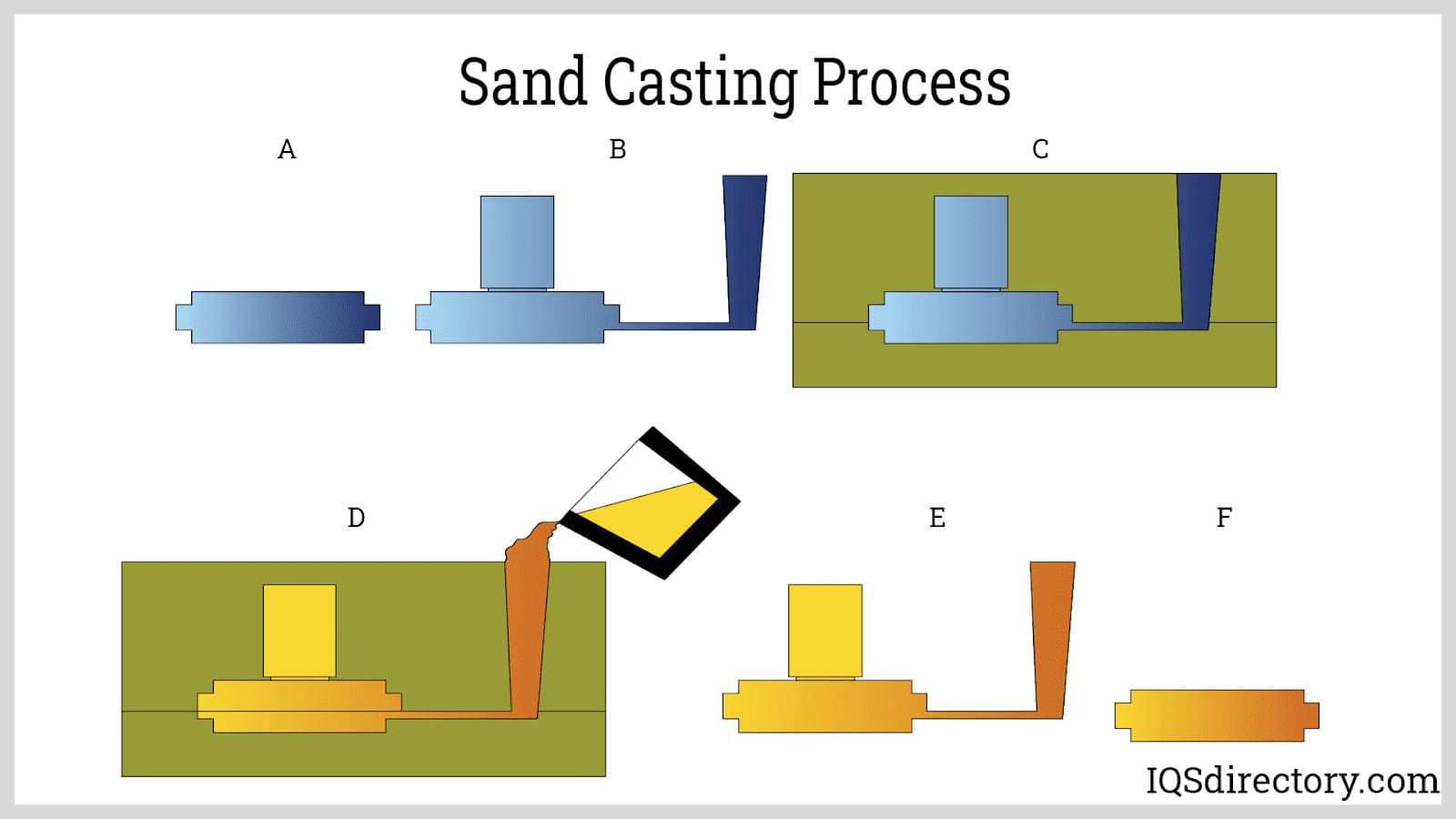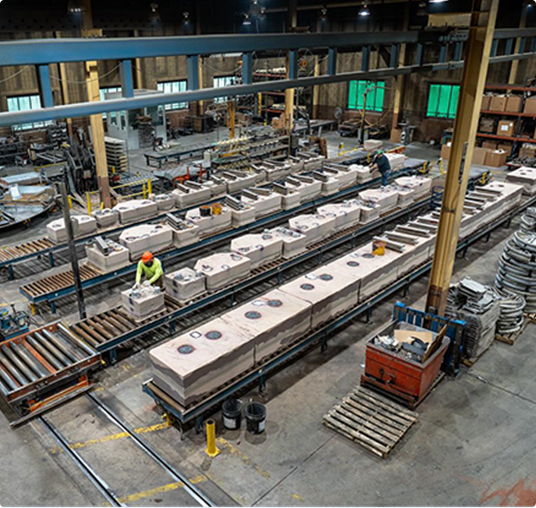Understanding the Role of Aluminum Foundry in Creating High-Quality Steel Products
Aluminum factories are important in the production of top notch steel products. They utilize numerous casting techniques, such as sand and pass away spreading, to achieve accuracy and resilience. With strenuous quality assurance procedures in place, these facilities assure that their items meet sector criteria. As industries progress, the role of Aluminum foundries continues to adapt. This questions regarding future developments and sustainability practices that may redefine their effect.
The Aluminum Spreading Process: Innovations and methods
The Aluminum casting process has progressed considerably, incorporating different methods and technologies that enhance efficiency and product quality. Generally, techniques such as sand spreading and pass away spreading were primary; nevertheless, improvements have actually presented processes like financial investment spreading and low-pressure die spreading. These innovations enable producers to accomplish complex layouts and tighter resistances, lowering product waste and boosting total efficiency.
The combination of computer-aided layout (CAD) and simulation software enables for more precise modeling and screening, making certain that possible concerns are determined early in the production cycle. Metal Castings. Additionally, advancements in alloy formulations bring about enhanced mechanical residential properties and rust resistance
These developments not just enhance production yet likewise advertise sustainability by decreasing energy intake and exhausts. As the sector continues to embrace brand-new innovations, the Aluminum spreading process continues to be an important component in generating premium metal items that meet varied market needs.
Applications of Aluminum in Various Industries
Light weight aluminum's adaptability and beneficial residential or commercial properties make it a valuable product across numerous industries. In the auto sector, Aluminum is extensively utilized for its light-weight attributes, adding to enhanced fuel effectiveness and performance. The aerospace market likewise advantages, as aluminum's high strength-to-weight ratio improves airplane design while maintaining safety and security standards.
In building and construction, Aluminum is preferred for its resilience and resistance to rust, making it suitable for window frames, roofing, and structural elements. The packaging market leverages light weight aluminum's safe nature and recyclability, especially in food and beverage containers, guaranteeing safety and sustainability.
Furthermore, the electric sector employs Aluminum for its outstanding conductivity in electrical wiring and transmission lines. The consumer products industry uses Aluminum in products ranging from kitchen utensils to electronics, emphasizing its adaptability. As a result, Aluminum plays an essential role in enhancing functionality, efficiency, and sustainability across diverse applications.
Benefits of Using Aluminum Over Other Steels
While several steels are employed in different applications, Aluminum stands apart because of its special combination of buildings that supply several benefits over various other materials. Its lightweight nature considerably minimizes transportation expenses and energy usage, making it optimal for markets such as automobile and aerospace. Light weight aluminum's outstanding deterioration resistance improves resilience, expanding the life of items and decreasing upkeep demands. Furthermore, it exhibits high thermal and electric conductivity, making it suitable for electric and thermal administration applications.
The steel's malleability permits intricate more tips here shapes and detailed styles, providing adaptability in manufacturing procedures. Additionally, Aluminum is 100% recyclable without loss of top quality, promoting sustainability and lowering environmental influence. Metal Castings. These features, combined with its relatively affordable compared to various other metals, position Aluminum as a favored selection across numerous markets. Overall, the benefits of Aluminum contribute to its enhancing appeal in the manufacturing of top quality metal products

Quality Assurance Procedures in Aluminum Foundries
Quality control measures play a necessary duty in the Aluminum Foundry procedure, ensuring that the final products satisfy extensive market requirements and client assumptions. These procedures typically start with product inspection, where raw Aluminum is examined for purity and structure. Once the casting process begins, temperature level control is vital; maintaining perfect molten metal temperatures prevents flaws such as porosity and shrinking.
Furthermore, non-destructive screening (NDT) methods, including ultrasonic and radiographic evaluations, are employed to detect inner defects without damaging the castings. Visual inspections are additionally performed at different stages to recognize surface area flaws.
Additionally, adherence to recognized quality monitoring systems, such as ISO standards, is essential for keeping uniformity and traceability throughout the manufacturing procedure. Routine audits and worker training on high quality standards add to an overall society of excellence, ensuring that the items not only fulfill however go beyond customer expectations in efficiency and toughness.
The Future of Aluminum Foundries: Trends and Sustainability
As the Aluminum Foundry market advances, emerging fads and a focus on sustainability are reshaping useful source its landscape. Boosting need for sturdy and lightweight products in fields like automotive and aerospace drives technology in Aluminum casting techniques. Advanced innovations, such as expert system and automation, are enhancing production performance and precision while reducing waste.
Sustainability is ending up being a vital issue, triggering factories to carry out environment-friendly techniques, consisting of recycling Aluminum scrap and utilizing eco-friendly energy resources. The shift towards round economic situation concepts motivates shops to minimize ecological influence while meeting consumer expectations for sustainable products.
Furthermore, regulative stress are pressing the market in the direction of cleaner procedures, cultivating cooperation between producers and environmental companies. As these fads merge, the future of Aluminum shops will likely be defined by a dedication to sustainability, quality, and efficiency, ensuring their relevance in an affordable market.
Often Asked Concerns
What Are the Environmental Impacts of Aluminum Foundries?
Aluminum foundries add to ecological impacts through energy consumption, greenhouse gas discharges, and potential air and water air pollution. Furthermore, mining bauxite for Aluminum can lead to habitat devastation and soil destruction, impacting local environments.

Exactly How Do Shops Guarantee Employee Safety Throughout Production?
Factories apply extensive safety and security methods, including protective devices, air flow systems, and routine training. They conduct danger analyses and maintain security standards to reduce risks, making certain a much safer working setting for employees throughout the production process.
What Accreditations Should a Light Weight Aluminum Foundry Have?
An aluminum Foundry should possess accreditations such as ISO 9001 for top quality management, ISO 14001 for environmental management, and OSHA compliance Home Page for security requirements. These qualifications ensure adherence to sector regulations and commitment to high quality and security methods.
Exactly How Does Aluminum Recycling Affect Foundry Procedures?
Aluminum reusing greatly enhances Foundry operations by providing an affordable resources source, minimizing power usage, and lessening environmental impact - Metal Castings. It likewise encourages sustainable techniques, permitting factories to maintain competitiveness in a quickly evolving market
What Are Usual Flaws in Aluminum Castings?
Typical problems in Aluminum castings consist of porosity, shrinking, additions, and surface imperfections. These concerns can develop from incorrect mold layout, insufficient putting methods, or contamination throughout the melting and casting procedures, influencing general item quality.
